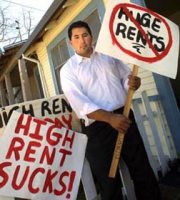There’s been much talk from various quarters about needing to come terms with the idea that the high street is dying. Bill Grimesy has set this as the starting point in many discussions, and more recently the head of Ocado, Tim Steiner, expounded pretty similar views in a rather unhelpful gush of vitriol to the national press.
The rhetoric characteristically continues along the lines that we’d all better get used to it and deal with the reality. ‘Dealing with it’ usually involves tacit agreement that shopping malls will be the main destination for consumers of the future and the rest of the slack will be taken up by the direct internet purchases, click and collect and m-commerce.
Ailing high streets, we’re told, will need to re-imagine themselves into areas that will attract people for a variety of reasons rather than just shopping. Empty retail properties will be re-tasked into other uses, primarily residential. There’s usually a raft of other ideas that come along in this mix. Crèches, art galleries, community centres and various other esoteric uses are floated as essential ingredients in a new-age municipal Mecca that will sweep away the tumbleweeds and revitalise areas that people that are staying away from in droves right now.
It’s a view predicated on pragmatism that has some merit. But I’d ask at what point does pragmatism slip into the realms of defeatism? I think we’re a long way off from throwing in the towel on the high street, we just need the political will to deal with the underlying problems that have dogged it since investment landlords, property developers and city councillors first crawled out of the primordial slime.
Logical
I don’t argue with the logic of mixed uses in any retail environment, based as it is to a large extent on models already in existence in the shopping centres and mega-malls that are now a ubiquitous part of the UK consumer landscape. It’s a truism that shoppers don’t just want to shop these days. They want to drink coffee, browse the internet, have a free makeover or a life-changing experience on a climbing wall. But with all this already available in the big retail and recreational cathedrals, one has to wonder why exactly people would return to high streets, even after the proposed transformations are complete. If all it’s going to take to bring these people back into their local areas is a few new service providers and a community centre, why hasn’t this already been done years ago?
 The answer lies in the roots of all the problems currently besetting local high streets. That of high rents, high rates, poor provision of expensive parking facilities, and the lack of a co-ordinated approach to tenant mix and shared space management. Yes the same boring old issues I’ve been going on about for years, but they haven’t got any less injurious to retailers fortunes with age.
The answer lies in the roots of all the problems currently besetting local high streets. That of high rents, high rates, poor provision of expensive parking facilities, and the lack of a co-ordinated approach to tenant mix and shared space management. Yes the same boring old issues I’ve been going on about for years, but they haven’t got any less injurious to retailers fortunes with age.
These shortcomings have already been trumpeted by various commentators and pundits, not to mention being detailed chapter and verse in the Portas Review. It’s likely that Bill Grimesy will cover some or all of this same ground again when his own report is published in a few weeks.
None of this is news, certainly not to those retailers struggling in such areas, or to the landlords faced with empty properties as a result of previous failures. The answer is to deal with these issues, not just talk about them. The answer is not to give up on the high street model and dismantle it by stealth.
Small high streets are incubators for fresh retail ideas driven by entrepreneurs with a good idea and not much capital. The fall in real terms value of commercial property should be a positive benefit in those circumstances, but by and large this is being undermined by landlords and developers who are desperately holding on, waiting for the boom times to return.
Add to this a government equally addicted to milking the high street cash cow through an iniquitous business rates system, and you don’t need to be an economic whizz kid to see why high street property has become toxic.
Re-model Re-task
By making a case for re-tasking or re-modelling empty shops we simply lay the groundwork for landlords and developers who would love to be able to turn empty shops into ‘luxury flats’ or demolish problem locations altogether and start again. And who could blame them?
 But in doing so we risk losing a valuable resource that we’ll probably never get back. Stores that right now that could, and should, be let on viable rents to small retailers eager to get a foot on the commercial property ladder. And I mean on proper long or medium term leases, not the fudgy panacea of the pop-up.
But in doing so we risk losing a valuable resource that we’ll probably never get back. Stores that right now that could, and should, be let on viable rents to small retailers eager to get a foot on the commercial property ladder. And I mean on proper long or medium term leases, not the fudgy panacea of the pop-up.
Once these units are gone those opportunities will disappear too. The large malls aren’t interested in small retailers in the long term, no matter how much they might say they are, and once there’s no other alternative where will independents have left to go?
Yes some small retail units will likely be left in town centres, or included in redevelopments. But then the reduction in availability will simply serve to support the high aspirations of landlords that have led us down the road we’re currently coming to the end of. The fact that there are large numbers of empty units being left languishing by landlords and letting agents asking for frankly stupid rents should be seen as a potential resource, not a problem to be erased by sending in yet more deep pocketed developers.
Opportunity knocks
There is an opportunity right now to rescue the situation by forcing landlords back into the real world. I’ve long advocated imposed rent control and local retail zoning, similar to the systems put in place to deal with down at heel areas in the USA in the 60s, 70s and 80s. If a property is empty for a certain period of time, local authorities would be able to take over the administration and let the unit on a fair rent. Landlords would be offered a return on investment at a set level above the current base rate and would of course lose liability for empty business rates.
This would go hand in hand with new planning powers to ensure a sensible tenant mix within given zones, thereby reducing the ‘usual suspect’ nature of small high streets, often populated with the same facades of betting shops, charity shops, coffee bars, mobile phone operators and the like.
 I’m all for the free market economy but high street decline is a socio-economic issue that needs to be managed at a local and national government level. It has knock on effects to the well-being and safety of local citizens and the monetary and social costs associated with those factors.
I’m all for the free market economy but high street decline is a socio-economic issue that needs to be managed at a local and national government level. It has knock on effects to the well-being and safety of local citizens and the monetary and social costs associated with those factors.
I’m not averse to seeing retail units turned into other service type uses, but I am very much concerned that once permanent changes are made to retail properties, especially into residential, we’ll see a decline in the small independent sector that will simply strengthen the dominance of large malls and developments that are far less supportive of those types of operations.
Re-tasking retail into other uses is certainly going to be an interest grabber for politicians and developers keen to make a killing out of empty units in town centres. But if they also kill off the high street in the process I think they rest of us will all be the poorer for it. As Joni Mitchell once sang, “you don’t know what you’ve got ‘til it’s gone”

